Trip to Mahabalipuram, Tamilnadu on December 5, 2007
The Great penance (Arjuna / Bhagiratha)- a bas-relief
It is an open air bas-relief, 100
ft long and 40 ft high with carvings on a rock face. A vertical cleft
in the centre divides the boulder into 2 sections.
In the cleft, the nagas depicted
in different styles, signify water - a naga king (man's face with a seven
headed snake hood and snake body below the waist), a naga queen (woman's
face with a three headed snake hood and snake body below the waist), a
naga. On either side of the naga queen are a pair of nagas with human body
and a naga hood. The man on the right has a three headed hood and
the man on the left has a five headed hood. The women on both sides
have a tiny single headed hood.
Several Gods, rishis, gandharvas,
ganas, kinnaras (creatures with human body with bird legs and wings), animals
and birds have been depicted. The figures on both boulders are facing
the cleft, moving towards the descending Ganga.
A man (either Arjuna or Bhagiratha)
can be seen doing penance standing on one leg & Siva is granting him
darshan. There are several ganas around him, kinnaras, the sun or
the moon (a figure with a halo) just above him and a few gandharvas.
Behind the ganas, to the left is
a forest scene depicting several (five) hunters with bow and other weapons
and animals such as deers, lions. The lion with its two suckling
cubs can be seen at the extreme right of the forest scene immediately after
the two ganas beside Siva. There is a huge outsized lizard between
the second hunter and the seated deer. The lions and the deers have been
depicted side by side.
Just below Siva, is a Vishnu shrine
and a rishi offering worship in front. The heads of three hermits
in front of the shrine are broken.
The lower section of the rock to
the left, is plain without even a rough etching.
To the right of the cleft is another
figure with a halo, several gandharvas, kinnaras & ganas. On
the lower portion of the right section, there is a wonderful scene of elephants
with several baby elephants under the mother’s belly.
Just in front of the elephant is
an old cunning cat that is pretending to be doing tapas so that it can
suddenly pounce on the gullible mice.
There are several stylized yali faced
lions, deers, swans distributed throughout the panel.
It is believed that there was a reservoir
at the top feeding water through the cleft to create a flow – the descent
of the Ganges.
There was a short spell of rain while
we were admiring the Penance panel. We took refuge under a tree opposite
the panel. This only gave us more time to appreciate the details.
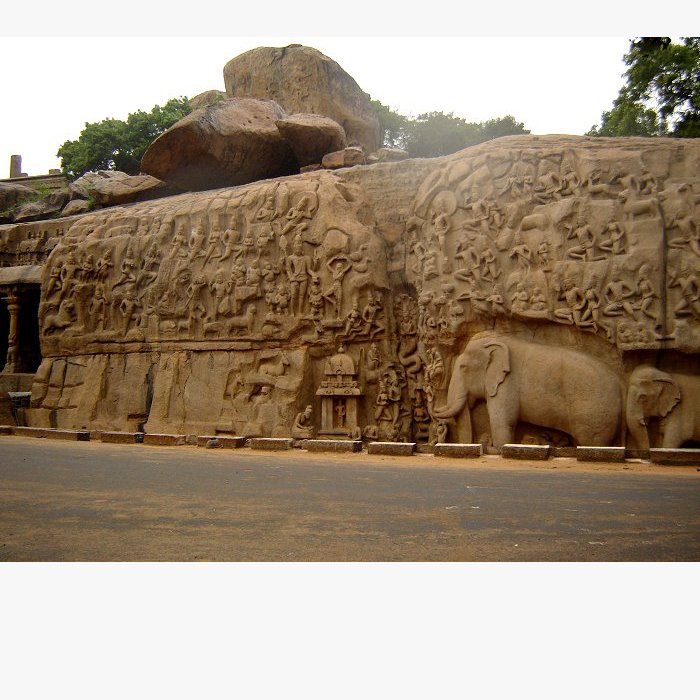
The Great penance (Arjuna / Bhagiratha)- a bas-relief, Mahabalipuram, Tamilnadu

The Great penance (Arjuna / Bhagiratha)- a bas-relief, Mahabalipuram, Tamilnadu
The boulder to our left - Gandharvas, kinnaras, hunters, animals, Siva & his ganas
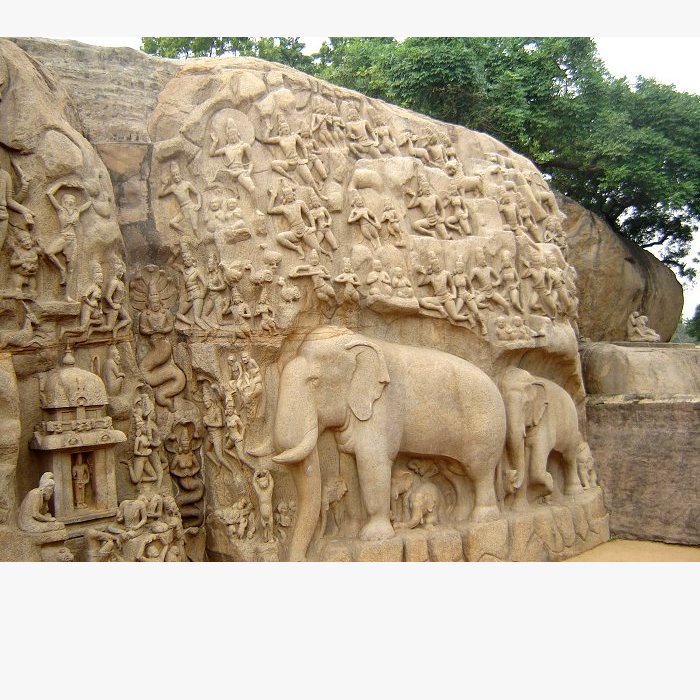
The Great penance (Arjuna / Bhagiratha)- a bas-relief, Mahabalipuram, Tamilnadu
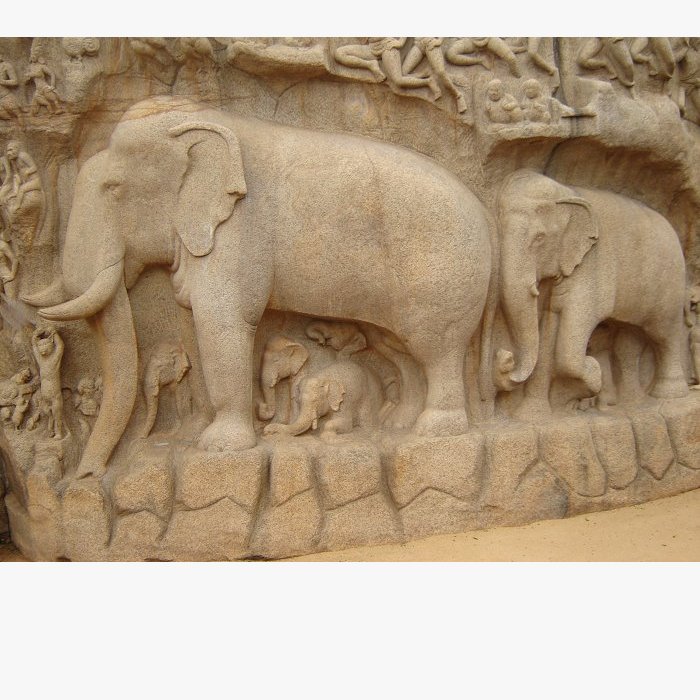
The Great penance (Arjuna / Bhagiratha)- a bas-relief, Mahabalipuram, Tamilnadu
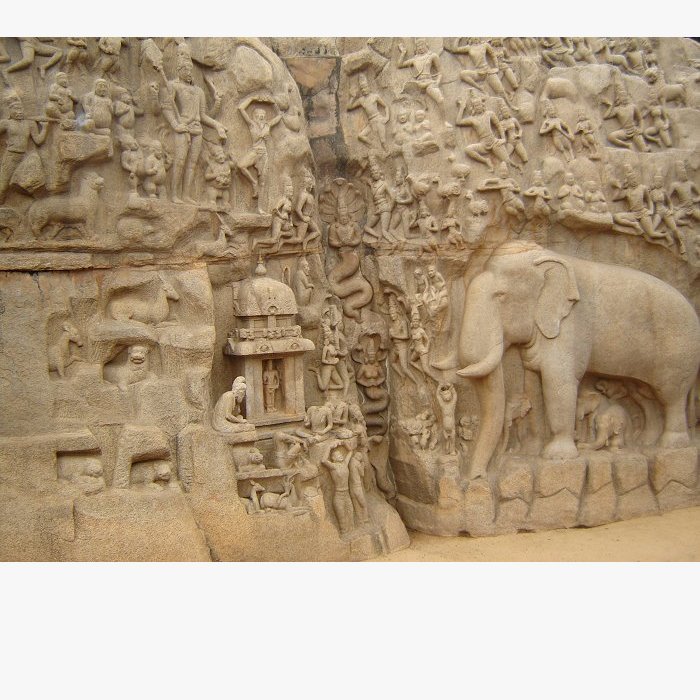
The Great penance (Arjuna / Bhagiratha)- a bas-relief, Mahabalipuram, Tamilnadu

The Great penance (Arjuna / Bhagiratha)- a bas-relief, Mahabalipuram, Tamilnadu
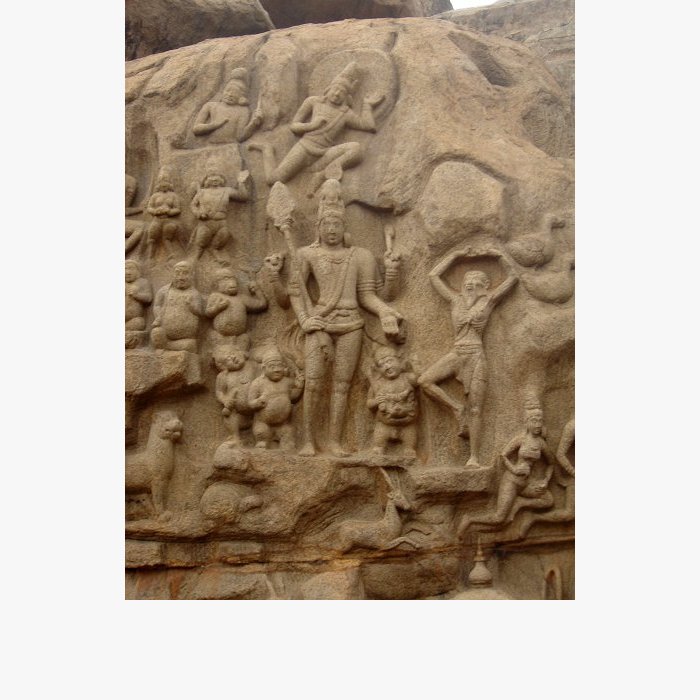
The Great penance (Arjuna / Bhagiratha)- a bas-relief, Mahabalipuram, Tamilnadu
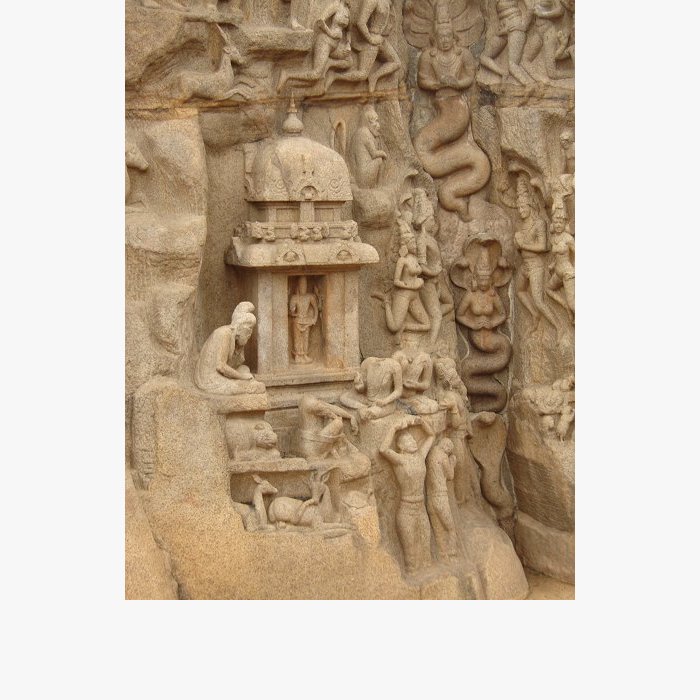
The Great penance (Arjuna / Bhagiratha)- a bas-relief, Mahabalipuram, Tamilnadu
Dr.Swaminathan, retired professor from IIT Delhi had organized a trip
to Mahabalipuram to understand and appreciate better the great art
treasures gifted to us by the Pallavas.
We visited only a few mandapams and caves, but at every spot
Mr.Swaminathan shared with us details such as - the Pallava kings who
had contributed, the structural variations / refinement that can be
observed in the structures belonging to different periods. And sadly,
also the vandalism - mostly broken noses, attempt to project a Siva
temple as a Vishnu temple or vice versa and also an attempt by the kings
to take credit without contributing. Since several Pallava rulers seem
to have shared the same titles, that further adds to the confusion.
Mr.Swaminathan first gave a general introduction to the temple
architecture and sculpture - the different styles of rock architecture
seen at Mahabalipuram - the monoliths, cave mandapams, structural
temple, bas relief.
|